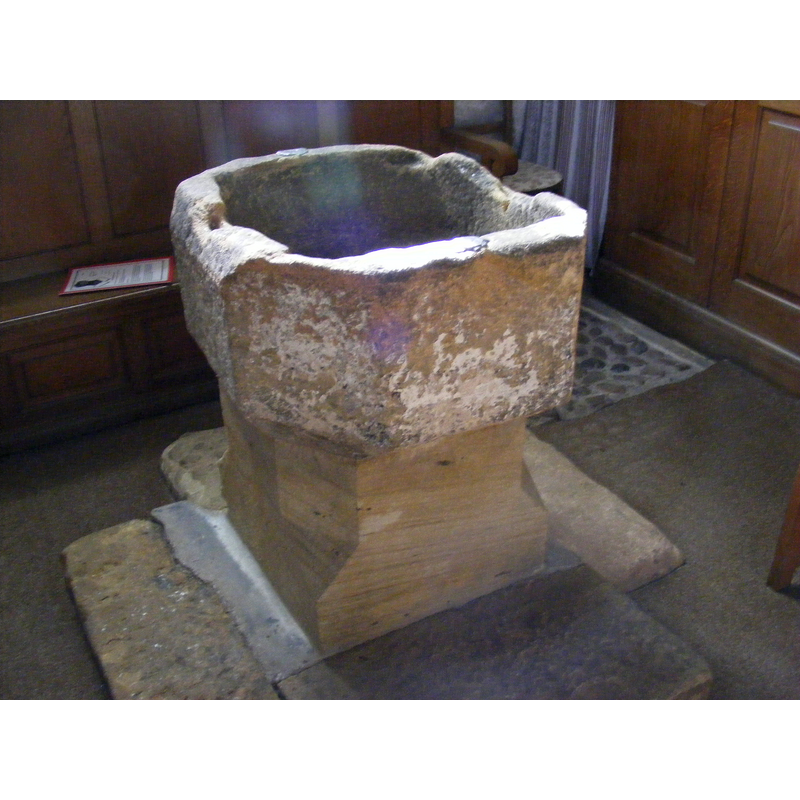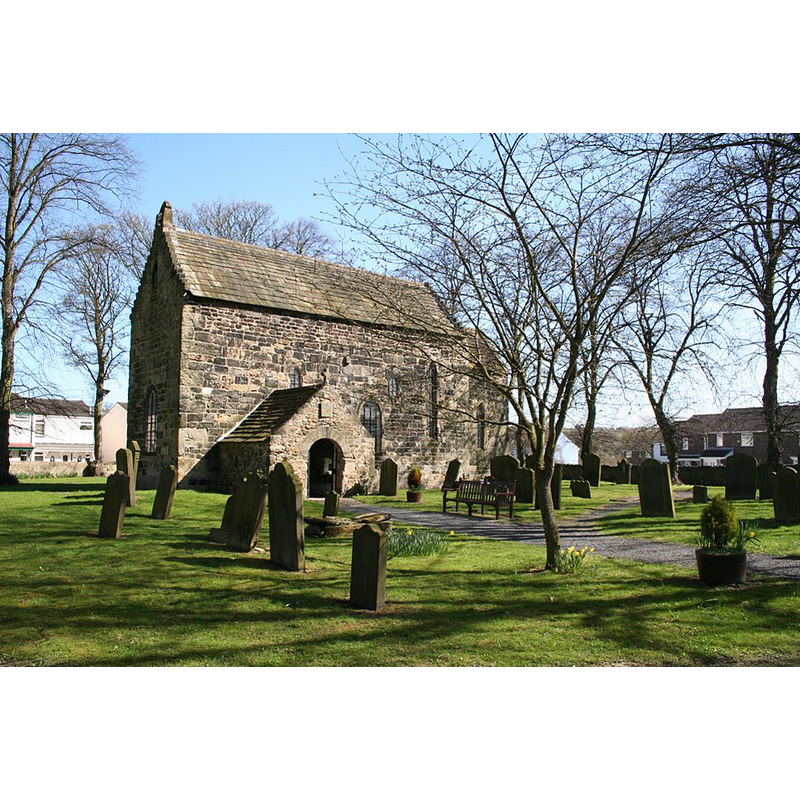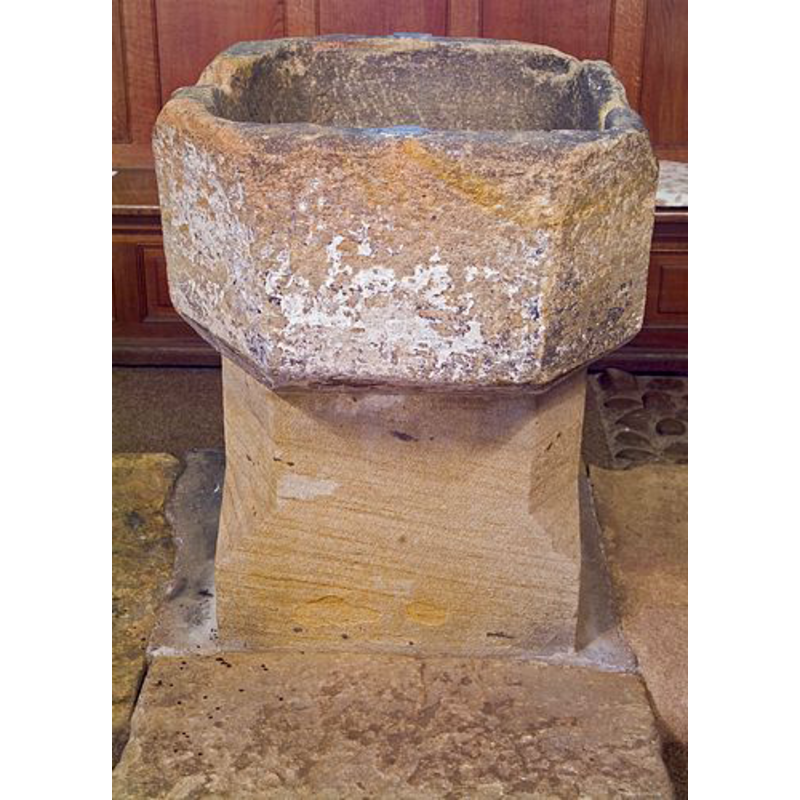Escomb / Escombe

Image copyright © Gruenemann [John W. Schulze], 2009
CC-BY-SA-3.0
Results: 5 records
view of church exterior - southwest view
view of church interior - nave - looking east
Scene Description: the ruinous interior of the church in 1880, prior to the restoration of the church
Copyright Statement: Image copyright © Escomb Saxon Church, 2012
Image Source: B&W photograph in Escomb Saxon Church [http://escombsaxonchurch.co.uk/] [accessed 16 July 2012]
Copyright Instructions: PERMISSION NOT AVAILABLE -- IMAGE NOT FOR PUBLIC USE
view of font
view of font
view of font in context
Scene Description: the font at the west end of the nave in 1881, immediately after the restoration of the church
Copyright Statement: Image copyright © Escomb Saxon Church, 2012
Image Source: B&W photograph in Escomb Saxon Church [http://escombsaxonchurch.co.uk/] [accessed 16 July 2012]
Copyright Instructions: PERMISSION NOT AVAILABLE -- IMAGE NOT FOR PUBLIC USE
INFORMATION
FontID: 02046ESC
Object Type: Baptismal Font1
Church/Chapel: Parish Church of St. John
Church Patron Saints: St. John
Church Location: Escomb, Bishop Auckland DL14 7SY, UK -- Tel.: +44 1388 602860
Country Name: England
Location: Durham, North East
Directions to Site: Located off (SW) the A689, 3 km WNW of Bishop Auckland, about 20 km SW of Durham
Ecclesiastic Region: Diocese of Durham
Font Location in Church: Inside the church, in the W end, W of the S door
Century and Period: 13th century, Transitional / Early English
Credit and Acknowledgements: We are grateful to David Ross, of www.britainexpress.com, for the photograph of this font
Church Notes: "Escomb Saxon Church is one of the oldest Anglo-Saxon churches in England [...] Founded in c.670-675, much of the stone came from the nearby Roman Fort at Binchester [...] restored in 1875-1880 by RJ Johnson, and in 1965 by Sir Albert Richardson" [wikipedia entry http://en.wikipedia.org/wiki/Escomb_Church [accessed 16 July 2012]]
Font Notes:
Click to view
No individual entry found for Escomb in the Domesday survey. Mackenzie & Ross (1834) and in Fordyce (1857) after them report a font here: "The church is an ancient building […] The baptismal font is a low octagonal bason of freestone." Described in Cox & Harvey (1907) as a noteworthy example of Norman font. The 'Crossing the Millennia' web site [http://web.ukonline.co.uk/cj.tolley/ctm/ctm-escomb.htm] mentions this font more recently, as "both fairly plain and likely to have been added by the Romans". Illustrated in Britain Express [www.britainexpress.com] with the caption: "The 13th century font. There is speculation that this may have originally been part of a Roman pillar." [NB: of all the above the latter appears to be the most accurate: the font appears monolithic, which would account for the claim of having had a former life and function [besides the fact that there was a Roman fort at nearby Binchester] -- the basin is octagonal and very irregular, the upper basin sides badly damaged, especially at two opposite sides, which would be consistent with the forceful removal of old cover staples; curiously the basin is square on the inside, not a common feature in octagonal fonts, and may mean that the exterior of the basin may have been originally square as well; the broad stem has partly chamfered angles making it octagonal on the stem but square at the bottom, and the lower base is quatrangular and slightly splaying. An article on the church by B.J. Taylor Photographic Archive (2005) [www.qlhs.org.uk/oracle/escomb/escomb.htm] [accessed 4 Spetember 2009] notes: "The crude octagonal font, still used for baptism, is thought to be tenth or eleventh century, but may be earlier, especially as the shape allowed for the total immersion of infants. The grooves at the top were carved in the thirteenth century in response to an ordinance from the Archbishop of York that fonts should be lockable so as to protect the Holy water retained for baptism from various superstitious practices." [NB: claims of the font being Saxon and/or ealier appear to be unfounded exagerations]
COORDINATES
Church Latitude & Longitude Decimal: 54.666111, -1.708056
Church Latitude & Longitude DMS: 54° 39′ 58″ N, 1° 42′ 29″ W
UTM: 30U 583326 6058404
MEDIUM AND MEASUREMENTS
Material: stone, freestone
Font Shape: octagonal (mounted)
Basin Interior Shape: square
Basin Exterior Shape: octagonal
REFERENCES
Cox, John Charles, English Church Furniture, New York: E.P. Dutton & Co., 1907
Fordyce, William, The History and Antiquities of the county palatine of Durham; comprising a condensed account of its natural, civil, and ecclesiastical history […], Newcastle, London and Edinburgh: A. Fullarton and Co., 1857
Mackenzie, Eneas, An historical, topographical, and descriptive view of the county palatine of Durham: comprehending the various subjects of natural, civil, and ecclesiastical geography, agriculture, mines, manufactures […], Newcastle-upon-Tyne: Mackenzie & Dent, 1834


